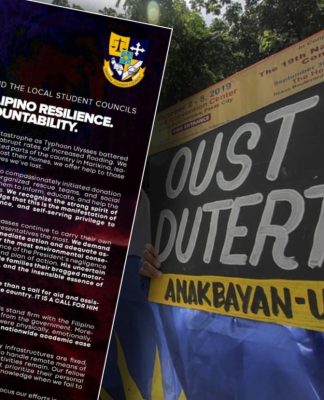WITH MANY religious questions surrounding the life of Jesus Christ, Pope Benedict XVI has come up with a new treatise that sheds light on the various angles and interpretations of the final days of Christ’s earthly life.
The Holy Father talks about Christ’s passion in the book Jesus of Nazareth: Holy Week, From the Entrance into Jerusalem to the Resurrection (Ignatius Press, 2011). He presents extensive comparisons of the four Gospels, academic discourses, and his own reflections.
The 341-page book, which follows the first volume narrating Christ’s journey from his baptism in Jordan River to the period of Transfiguration, is divided into nine chapters and has an epilogue.
In excerpts published on the Ignatius Press website, the aspects of Christ’s final journey include Judas’ betrayal, the Last Supper, and Jesus before Pontius Pilate.
Apostles’ betrayal
In “Mystery of the Betrayer”, the Pope said that Christ’s prediction on who will betray him was clear, but according to the Gospel of John, “the disciples still did not understand whom he meant.” Jesus was betrayed by Judas Iscariot, who traded him up for 30 pieces of silver, and Simon Peter, who denied him thrice.
Judas’ situation showed that those who betray the Lord find it hard to attain inner peace, the Pope said.
“Anyone who breaks off friendship with Jesus, casting off (the love he offers), does not attain liberty, does not become free, but succumbs to other powers,” he wrote.
But the Holy Father noted how “the light shed by Jesus into Judas’ soul was not completely extinguished” despite the great influence of evil.
“He does take a step toward conversion. He tries to save Jesus, and he gives the money back,” he said. “Everything pure and great that he had received from Jesus remained inscribed on his soul—he could not forget it.”
‘A very special’ supper
The fifth chapter, “Dating of the Last Supper”, discusses issues raised by religious scholars on the day of the Last Supper.
According to the Gospels of Matthew, Mark, and Luke, it happened on a Thursday, with the trial and crucifixion of Christ falling on the Passover feast that was a Friday.
But the Pope wrote that “it seems questionable whether the trial before Pilate and the crucifixion would have been permissible and possible on such an important Jewish feast day.”
On the other hand, the Gospel of John claims that the Last Supper was not done in line with the Jewish celebration, saying that the Passover feast that year ran from Friday evening to Saturday evening. But Christ may have anticipated the Passover ritual on a Thursday, as he knew he was going to die the following day.
“The Passover, therefore, began only in the evening, and at the time of the trial, the Passover meal had not yet taken place,” the Pontiff wrote. “The trial and crucifixion took place on the day before the Passover—on the ‘day of preparation’, not on the feast day itself.”
But regardless of the day it happened, the Pope wrote that the Last Supper remained to be “of a very special kind” because it “constituted [Christ’s] farewell.”
“During the meal, he gave them something new: he gave them himself as the true Lamb and thereby instituted his Passover,” the Holy Father said.
Facing Pilate
The seventh chapter “Jesus before Pilate” talks about the so-called instigators that pushed Christ into his suffering and passion.
The Pope said the “historical reality [seems to be] correctly described in John’s account and in Mark’s” because “the real group of accusers is the current Temple authorities, joined in the context of the Passover amnesty by the ‘crowd’ of Barabbas’ supporters.”
John referred to the accusers as “the Jews,” or the temple aristocracy, while Mark used the term “ochlos” to point to the “masses” lobbying for the release of the criminal. Matthew, however, pertained to the culprits as “all of the people,” which connotes generality.
The Holy Father also wrote that Pontius Pilate did recognize Jesus’ innocence and even showed fear over Christ’s insistence that he was the Son of God.
“Jesus’ accusers obviously realize this, and so they now play off one fear against another. Against the superstitious fear of a possible divine presence, they appeal to the entirely practical fear of forfeiting the emperor’s favor,” the Pope wrote.
Overall, the book attempts to explain the different aspects of Christ’s passion as narrated by the Gospels, by using the common reader’s language. But the unavoidable presence of technical religious terms such as trogein and ochlos makes it hard for some readers to easily grasp the context. Also, reading requires at least a basic knowledge of salvation history because the book directly deals with the controversies surrounding Christ’s life.


















